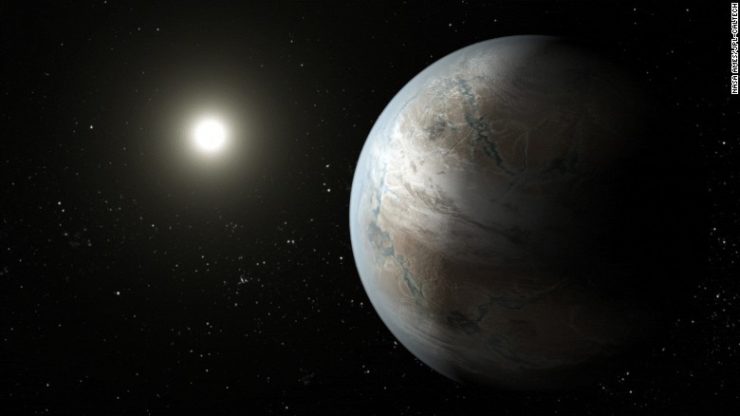Today, NASA and the ESO announced that astronomers have discovered seven earth-sized planets orbiting a star called TRAPPIST-1. The star system is located about 40 light years away.
Last August, scientists made headlines when they announced the discovery of Proxima b, a rocky Earth-sized planet located within the habitable zone of a nearby star, Proxima Centauri. The “habitable zone” is the distance a planet needs to be from a star in order to support liquid water. Too far, and all the water on the planet will be ice. Too close, and any water will boil off the surface.
The size and composition of Proxima b was also important; the majority of the planets we’d found until then had been gas giants, like Jupiter and Saturn. Because these planets are larger, they are easier to detect through the transit method.
Exoplanets are too small to find through direct observation. Instead, scientists primarily use the transit method to detect them: When a planet crosses in front of a star, as seen from Earth, it’s called transiting. The light output changes slightly, or “wobbles.” By discovering and measuring these wobbles, we’re able to detect planets, their sizes, and what they might be composed of.
Now scientists, under the lead Michaël Gillon of the STAR Institute at the University of Liège in Belgium, have discovered not one but seven Earth-sized planets around one star. What’s more, three of these planets could be within the habitable zone of TRAPPIST-1.
TRAPPIST-1 is a red dwarf star, which is much smaller than our own Sun (a yellow dwarf). Red dwarf stars typically aren’t much larger than our own planet (it’s thought that TRAPPIST-1 is the size of Jupiter), but have the density of a star the size of our Sun. The light output of a red dwarf star is quite faint; it’s in its final evolutionary state, but has billions of years of life left before it runs out of energy.
Scientists used ground and space-based telescopes aimed at TRAPPIST-1 to find these seven planets. Three were discovered in early 2016, but there was evidence that more planets orbited the star. Now, using the transit method, the team was able to determine that seven of the the planets we’ve discovered thus far are similarly sized to or smaller than Earth and Venus. Six of them are probably rocky, rather than gaseous.
In accordance with current planetary naming guidelines, these planets are named TRAPPIST-1b–g, in order of their distance from the star. It’s possible that any and all of these planets could support liquid water, though if any of the TRAPPIST-1 planets do, TRAPPIST-1e, f, and g are the best bets.
Why is liquid water so important? First, the presence of liquid water on the surface of a planet indicates it may be suitable for humans to visit and eventually colonize. Second, liquid water increases the likelihood that the planet may have developed some sort of life of its own.
Further examination of Proxima b has revealed that solar flares have likely stripped the planet’s atmosphere, so the discovery of more Earth-like planets within the habitable zone is promising news for scientists, as well as everyone interested in the mysteries of what’s out there.
NASA’s full release can be found here.
Swapna Krishna is a freelance writer, editor, and giant space and sci-fi geek. You can find her on Twitter at @skrishna.










